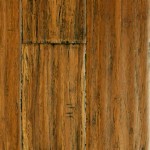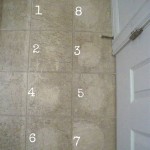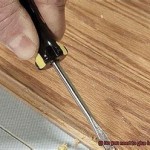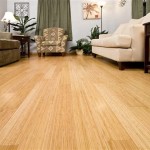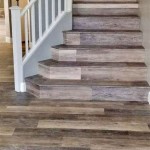Armstrong Hickory Engineered Flooring: A Comprehensive Overview
Armstrong, a name synonymous with flooring solutions for over a century, offers a diverse range of engineered hardwood flooring options, with hickory standing out as a particularly popular and robust choice. Hickory engineered flooring combines the natural beauty and warmth of solid hickory with the enhanced stability and versatility of engineered construction. Understanding the composition, benefits, installation, and maintenance of Armstrong hickory engineered flooring is crucial for making informed decisions about incorporating this flooring option into residential or commercial spaces.
Engineered hardwood flooring, unlike solid hardwood, consists of multiple layers of wood bonded together. Typically, a thin veneer of genuine hickory wood forms the visible surface layer, providing the aesthetic appeal of solid hardwood. Beneath the veneer lies a core made of layers of plywood, high-density fiberboard (HDF), or other wood composites. This multi-layered construction offers increased dimensional stability, making engineered flooring less susceptible to warping or cupping due to fluctuations in humidity and temperature compared to solid hardwood.
The Advantages of Hickory as a Flooring Material
Hickory, renowned for its exceptional hardness and durability, is an ideal choice for flooring in high-traffic areas. Its Janka hardness rating, a measure of wood's resistance to denting and wear, is significantly higher than many other commonly used hardwoods, such as oak or maple. This inherent hardness makes hickory flooring highly resistant to scratches, dents, and everyday wear and tear, ensuring a long-lasting and attractive floor covering.
Beyond its durability, hickory offers a distinctive and visually appealing grain pattern. Characterized by its pronounced grain variations and contrasting colors, hickory flooring adds character and warmth to any room. The natural color variations within hickory wood range from creamy whites and light tans to rich browns and reddish hues, contributing to a rustic and inviting aesthetic. These natural variations also effectively conceal minor imperfections and wear, further enhancing the longevity and attractiveness of the flooring.
Armstrong utilizes various finishing techniques to enhance the natural beauty of hickory flooring. These finishes not only protect the wood surface but also influence the overall look and feel of the flooring. Common finishes include polyurethane, acrylic, and oil-based finishes, each offering different levels of protection, sheen, and maintenance requirements. UV-cured finishes are also prevalent, providing enhanced resistance to sunlight and fading.
Armstrong's Engineered Construction and Features
Armstrong's engineered hickory flooring benefits from the company’s commitment to innovation and quality. Their engineered construction methods are designed to maximize stability and minimize the risk of warping or buckling, even in environments with fluctuating humidity levels. The core layers of the engineered planks are carefully constructed to resist moisture penetration and provide a stable base for the hickory veneer.
Many Armstrong engineered hickory flooring products feature advanced locking systems that simplify installation. These click-lock systems eliminate the need for nails or glue, allowing for a floating floor installation. Floating floors are particularly well-suited for installation over concrete subfloors or existing flooring, making them a versatile option for renovations and new construction. The ease of installation can significantly reduce labor costs and project completion time.
Armstrong offers a wide range of style options within its engineered hickory flooring collection. These options include different plank widths, lengths, and thicknesses, allowing for customization to suit various design preferences and room sizes. Wider planks can create a more contemporary and spacious feel, while narrower planks can evoke a more traditional or classic look. The thickness of the wear layer, the actual hickory veneer, also varies, impacting the flooring's durability and lifespan.
Furthermore, Armstrong incorporates various surface treatments and textures to enhance the visual appeal and tactile experience of its hickory flooring. Hand-scraped finishes create a distressed and rustic look, while wire-brushed textures accentuate the natural grain patterns of the wood. Smooth finishes offer a more contemporary and refined aesthetic. Beveled edges and ends add definition to each plank, creating a visually distinct and polished look.
Installation Considerations for Armstrong Hickory Engineered Flooring
Proper installation is crucial to ensure the long-term performance and appearance of any engineered flooring, including Armstrong hickory. Preparing the subfloor is the first and most important step. The subfloor must be clean, level, and dry before installation can begin. Any imperfections, such as cracks or unevenness, must be addressed to prevent issues with the flooring later on. This may involve patching cracks, leveling the subfloor with self-leveling compound, or sanding down high spots.
As with all wood flooring, allowing the Armstrong hickory engineered flooring to acclimate to the room's temperature and humidity levels before installation is essential. Acclimation typically involves laying the flooring boxes flat in the room for several days, allowing the wood to adjust to its new environment. This helps to minimize expansion or contraction after installation, preventing gaps or buckling.
Depending on the specific product and subfloor, Armstrong engineered hickory flooring can be installed using different methods. The most common methods are floating, gluing, and nailing. Floating floors, using the click-lock system, are the easiest to install and do not require adhesives or fasteners. Glue-down installations provide a more secure and stable bond between the flooring and the subfloor, while nail-down installations are typically used over wood subfloors.
When installing engineered hickory flooring, it is important to follow the manufacturer's instructions carefully. These instructions provide specific guidance on expansion gaps, underlayment requirements, and other critical details that affect the flooring's performance. Expansion gaps are small spaces left around the perimeter of the room to allow for natural expansion and contraction of the wood. Underlayment provides a cushion between the flooring and the subfloor, reducing noise and improving insulation.
For complex installations or if you lack the necessary skills and experience, professional installation is highly recommended. Professional installers have the expertise and tools to ensure that the flooring is installed correctly and efficiently, minimizing the risk of problems down the road.
Maintenance and Care of Armstrong Hickory Engineered Flooring
Proper maintenance is essential to preserve the beauty and longevity of Armstrong hickory engineered flooring. Regular cleaning is the first line of defense against dirt, dust, and debris that can scratch or dull the finish. Sweeping, vacuuming, or using a dust mop regularly will help to keep the floor clean and free of abrasive particles.
When cleaning Armstrong hickory engineered flooring, use a cleaning product specifically designed for hardwood floors. Avoid using harsh chemicals, abrasive cleaners, or excessive water, as these can damage the finish or penetrate the wood. Damp mopping with a microfiber mop and a pH-neutral cleaner is generally recommended. Ensure that the mop is only slightly damp to prevent water from seeping into the seams between the planks.
Protecting the flooring from scratches and dents is also important. Using furniture pads under the legs of chairs, tables, and other heavy items can help to prevent scratches when furniture is moved. Area rugs in high-traffic areas can provide an extra layer of protection. Avoid wearing shoes with high heels or cleats on the flooring, as these can cause dents and scratches.
Maintaining a consistent humidity level in the home can also help to prolong the life of Armstrong hickory engineered flooring. Excessive humidity can cause the wood to expand, while low humidity can cause it to contract. Maintaining a humidity level between 30% and 50% is generally recommended. Using a humidifier or dehumidifier can help to regulate humidity levels.
Over time, the finish on Armstrong hickory engineered flooring may wear down. Depending on the type of finish, it may be possible to recoat the floor to restore its luster. Recoating involves lightly sanding the surface and applying a new coat of finish. This can be done several times over the life of the flooring, extending its lifespan and maintaining its appearance.
For more extensive damage, such as deep scratches or gouges, professional repair may be necessary. A flooring professional can repair or replace damaged planks, blending them seamlessly with the existing flooring. Preventing damage through proactive measures is always preferable to costly repairs.

Armstrong Rural Living Hickory Engineered Fall Canyon Erh5301ee Discount Truehardwoods Com

Armstrong American Scrape Engineered Hickory Natural 5 Eas511ee Discount Truehardwoods Com

Discount Hartco Formerly Armstrong American Scrape 5 Solid Hickory Candy Apple Hardwood Flooring Sas509 By Hurst Hardwoods

Hartco Formerly Armstrong American Scrape 5 Engineered Hickory Western Mountain Hurst Hardwoods

Armstrong American Scrape Engineered Hickory Pacific Coast 5 3 4 Eahas65l405h Discount Truehardwoods Com

Armstrong American Scrape Engineered Hickory Eagle Nest Aa Floors Toronto

Armstrong Hardwoord American Scrape Hardwood Hickory Northern Twilight

Armstrong Timbercuts Hickory Solid Brick Shade 2 1 4 3 5 Sahtcm9l402 Discount Truehardwoods Com

Hartco Formerly Armstrong American Scrape 5 Engineered Hickory Cajun Spice Hurst Hardwoods

Armstrong Hickory Antique Natural Engineered Hardwood Floor Surface Finish Glossy Thickness 9mm At Rs 320 Sq Ft In Lucknow
Related Posts

